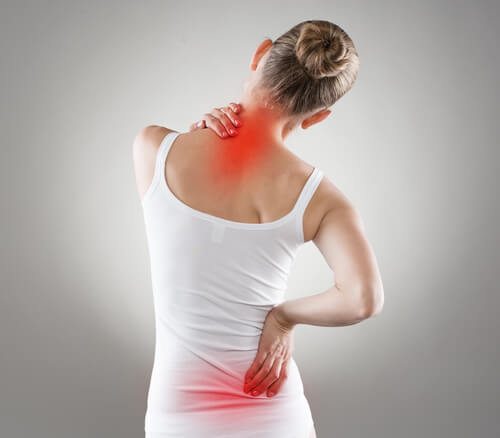Hi All. I suffer from vulvodynia and Peat recommends angiotensin blockers for this condition. I haven't got hypertesnion, but I'm desperate to try that treatment. Have you experiemented with it for COVID or other issues and would like to share a dose or how you prevented hypotension from this drug? Thank you!
Navigation
Install the app
How to install the app on iOS
Follow along with the video below to see how to install our site as a web app on your home screen.
Note: This feature may not be available in some browsers.
More options
-
By using this site you agree to the terms, rules, and privacy policy.
-
Charlie's Restoration Giveaway #2 (Entire Home EMF Mitigation & Protection Along With Personal Protection) - Click Here To Enter
-
Dear Carnivore Dieters, A Muscle Meat Only Diet is Extremely Healing Because it is a Low "vitamin A" Diet. This is Why it Works so Well...
Rest the rest of this post by clicking here
-
The Forum is transitioning to a subscription-based membership model - Click Here To Read
Click Here if you want to upgrade your account
If you were able to post but cannot do so now, send an email to admin at raypeatforum dot com and include your username and we will fix that right up for you.
You are using an out of date browser. It may not display this or other websites correctly.
You should upgrade or use an alternative browser.
You should upgrade or use an alternative browser.
What's a safe losartan dose for those without hypertension?
- Thread starter Tansia
- Start date
- Joined
- Oct 30, 2015
- Messages
- 818
Maybe start with a fraction of the starting dose for HBP (25 mg - 50 mg). so maybe 2.5 mg. Read all the potential side effect and pay close attention.
what caused the vulvodynia to begin with?
what caused the vulvodynia to begin with?
Vulvodynia was triggered by intravaginal herbal pressaries- it's been one year since it started and I'm really desperate to try anything that can help. Initially I thought that it's just irritation and tried but A and E and DHEA as at some point I thought this could be hormonal. But they didn't help.Maybe start with a fraction of the starting dose for HBP (25 mg - 50 mg). so maybe 2.5 mg. Read all the potential side effect and pay close attention.
what caused the vulvodynia to begin with?
- Joined
- Oct 30, 2015
- Messages
- 818
What about topical high dose progesterone?
@Elie you min dtopicl on vulva? I have not tried high doses as yet - only small doses.What about topical high dose progesterone?
I've tried all the recommendations form Ray (except ARBs) that I posted some time ago:
Ray's View Of Causes Of Vulvodynia
Hi Guys, I've asked Ray's about causes of vulvodynia and treatment for this disease. I was also interested if it could be related to estrogen and endometriosis. I've got a really nice explanation form Ray and would like to share it with you. Maybe you could also suggest other treatments that...
Women with provoked vestibulodynia (PVD) compared to healthy controls (HC) had reduced concentrations of pregnenolone, progestin and androgen metabolites involved in the steroid hormone biosynthesis. These reductions were observed primarily in vaginal fluid not plasma suggesting localized effects in the vagina and vestibule rather than systemic alterations. The observed reductions in vaginal levels of several androgenic metabolites were associated with increased total vulvar vestibular pain and vaginal muscle tenderness and decreased functional connectivity in pain processing brain regions, the primary sensory and motor cortices. We observed that use of systemic hormonal contraceptives resulted reduced plasma concentrations of the metabolites involved in steroidogenesis in both PVD and HC. There was also some evidence that use of systemic hormones reduced vaginal levels of these metabolites in HCs but not PVD. Finally, pain duration, total vulvar vestibule pain and total vaginal muscle tenderness did not differ in women with PVD using systemic hormonal contraceptives compared to women not using hormones or those using local hormones.
The lower vaginal levels of steroidogenic metabolites in women with PVD, including androgenic steroids (e.g. 16a-hydroxy DHEA 3-sulfate and androstenediol disulfate, a metabolite of DHEA) and pregnenolone, a precursor to both progesterone and DHEA synthesis, could lead to alterations in mucosal structure and thinning of the mucosa of the vestibule rendering the tissue more vulnerable to injury and inflammation. The vaginal and vulvar epithelium express high levels of androgen receptors. Mucin-secreting vestibular glands also express high levels of androgen receptors; thus, changes in steroids observed in PVD group could ultimately contribute to decreased mucin production, vulnerability to chemical, physical or microbial damage and hypersensitivity. Androgens are aromatized to estrogens (not detected in the current dataset) therefore it is difficult to affirm that their final peripheral effect is caused by the androgens or by conversion to estrogens or by combination of both. Lower local concentrations of androgen could result in diminished estrogen binding in vulvar and vaginal tissues.
Because progesterone and estrogen can modulate pain perception, the changes detected in vaginal fluid could also contribute to mechanical allodynia in vestibule and vaginal muscles. The progestin, 5 alpha-pregnan3beta, 20 beta diol, was lower in PVD vaginal fluid and is a neurosteroid capable of binding steroid membrane GABA A receptors with inhibitory, excitatory and neurotrophic effects. Androgens have broad anti-inflammatory effects on cellular and molecular levels and can regulate the expression of inflammatory cytokines, known to sensitize nociceptors, such as TNF-alpha, interleukin-6, and interleukin-1beta. Taken together, alterations in steroid hormones (as observed in PVD) could directly affect the vaginal mucosa (e.g., resulting vulnerability to irritation and inflammation) and modulate nociception through changes in innervation.

Reduced concentrations of vaginal metabolites involved in steroid hormone biosynthesis are associated with increased vulvar vestibular pain and vaginal muscle tenderness in provoked vestibulodynia: An exploratory metabolomics study
Provoked vestibulodynia (PVD) is a chronic vulvar pain disorder characterized by hypersensitivity and severe pain with pressure localized to the vulvar vestibule. Knowledge regarding pathophysiological mechanisms contributing to the etiology and production ...
You're welcome @Tansia, I hope you find it useful!

 www.ncbi.nlm.nih.gov
www.ncbi.nlm.nih.gov

 selfhack.com
selfhack.com
A lectin-free diet may also help! A few specific genetic variations have been associated with vulvodynia, including women with vulvodynia being more likely to express the variant allele of mannose-binding lectin (MBL2 gene).

 selfhack.com
selfhack.com
Bromelain (other proteolytic enzymes such as serrapeptase) also has bradykinin-degrading activity. Bromelain hydrolyzes bradykinin and reduces kininogen and bradykinin levels in serum and tissues, improving inflammation.

 selfhacked.com
selfhacked.com
A role for bradykinin signaling in chronic vulvar pain
Chronic vulvar pain is alarmingly common in women of reproductive age and is often accompanied by psychological distress, sexual dysfunction, and a significant reduction in quality of life. Localized provoked vulvodynia (LPV) is associated with intense vulvar pain concentrated in the vulvar vestibule (area surrounding vaginal opening). To date, the origins of vulvodynia are poorly understood, and treatment for LPV manages pain symptoms, but does not resolve the root causes of disease. Until recently, no definitive disease mechanisms had been identified; our work indicates LPV has inflammatory origins, although additional studies are needed to understand LPV pain. Bradykinin signaling is one of the most potent inducers of inflammatory pain and is a candidate contributor to LPV. We report that bradykinin receptors are expressed at elevated levels in LPV patient versus healthy control vestibular fibroblasts, and patient vestibular fibroblasts produce elevated levels of proinflammatory mediators with bradykinin stimulation. Inhibiting expression of one or both bradykinin receptors significantly reduces proinflammatory mediator production. Finally, we determined that bradykinin activates NFκB signaling (a major inflammatory pathway), while inhibition of NFκB successfully ablates this response. These data suggest that therapeutic agents targeting bradykinin sensing and/or NFκB may represent new, more specific options for LPV therapy.
A role for bradykinin signaling in chronic vulvar pain
Chronic vulvar pain is alarmingly common in women of reproductive age and is often accompanied by psychological distress, sexual dysfunction, and a significant reduction in quality of life. Localized provoked vulvodynia (LPV) is associated with intense ...
NF-κB Activators
- Oxidative stress [41]
- Psychological Stress [1]
- Eating too much – too many carbs, fat or protein will activate NF-κB.
- An unhealthy diet – fruits and veggies contain phytochemicals to inhibit NF-κB [42]
- Mineral Deficiency – Magnesium [43], Chromium [44] and Zinc [45]
- High blood glucose levels [47] – usually because of high glycemic index foods [48]
- Low active form of Vitamin D (1,25OH2D) [49]
- Smoking [50]
- Lectins [51]
- Circadian Rhythm Disruption [52]
- Sleep deprivation [53]
- Sun/UV rays [54]
- Acute exercise [55]
- Alcohol [56]
- Excess fat in the blood [16] (from excess fat, carbs or fat tissue/obesity)
- Obesity [16]
- Excess saturated fat [57] (but not caprylic acid and lauric acid)
- Heavy metals [58]
- High protein diet (via IGF-1) [59]
- Aldosterone [60] and Angiotensin II [61]
NF-κB Inhibitors
Foods
- Black Cumin Seed Oil [73]
- Blueberries [74]
- Fish/Fish Oil[75]
- Nutritional Yeast/B–glucans – found in mushrooms also [76]
- Resistant starch [77]
- Olive oil [78]
- Honey (gelam, but others as well) [79]
- Jasmine Tea/Tea Polyphenols [80]
- Rooibos tea [81]
- Tart Cherry [82]
- Cayenne/Capsicum [83]
- Pomegranate (Ellagic acid) [84]
- Stevia [85]
- Trehalose [86]
- Cinnamon/Sodium Benzoate
- Chocolate/cocoa [87]
- Soy [88]
- Flax [89]
- Sesame [90]
- Cruciferous veggies/Sulforaphane [91]
- Garlic (diallyl sulfide, S-allyl mercapto cysteine, ajoene) [92]
- Turmeric (curcumin) [93]
- Red pepper (capsaicin) [93]
- Clove (eugenol) [93]
- Ginger (gingerol) [93]
- Cumin [93]
- Anise [93]
- Fennel (anethole) [93]
- Basil [93]
- Rosemary (ursolic acid) [93]
- Olives
- Celery
- Tomato powder/Lycopene
Hormones
- Melatonin [94]
- Pregnenolone
- Progesterone [95]
- DHEA [96]
- Cortisol [97]
- Allopregnanolone [98]
- Estradiol [99]
Supplements
- Magnesium [43]
- Zinc [45]
- PQQ [100]
- Aspirin [101]
- Curcumin [102]
- Butyrate [103]
- NAD+ [104, 105]
- Lactic acid [106]
- Boswellia [107]
- EGCG [108]
- Theaflavins [109] (potent)
- Hydroxytyrosol [110]
- Licorice [111, 112]
- Luteolin [113]
- Andrographolide [28]
- Fisetin [114]
- Resveratrol [115, 104]
- Berberine[116]
- Theanine [117]
- Olive leaf/Oleuropein
- Parthenolide/Feverfew (potent) [118]
- Quercetin [114]
- Honokiol [119]
- Rutin [114]
- Myricetin [114]
- Bromelain [120]
- Chinese Skullcap/Baicalin [121]
- Danshen/ Tanshinone [122]
- Fo-Ti [123]
- Tribulus [123]
- Astaxanthin [124]
- Histidine [125]
- Betulin/Chaga [126]
- Oxymatrine [127]
- NAC [128]
- Lipoic Acid [129]
- Bilberry
- Astragalus
- Milk thistle/Silymarin
- Bitter melon
- Grape Seed Extract
- Epimedium
- Emodin (found in Fo-Ti, Resveratrol Pills, Aloe, Rhubarb)
- Ursolic acid
- Molecular Hydrogen [130]

All About NF-kB: Function, Inhibitors & Activators - SelfHack
NF-κB is a critical inflammatory signal. Unhealthy behaviors activate it, while many herbs inhibit it. Find our complete list of NF-κB hacks here.
A lectin-free diet may also help! A few specific genetic variations have been associated with vulvodynia, including women with vulvodynia being more likely to express the variant allele of mannose-binding lectin (MBL2 gene).

The Lectin Avoidance Diet + Foods High & Low in Lectins - SelfHack
Are you sensitive to lectins? The Lectin Avoidance Diet can help you discover which foods are inflammatory for you. Click here to try it out.
Bromelain (other proteolytic enzymes such as serrapeptase) also has bradykinin-degrading activity. Bromelain hydrolyzes bradykinin and reduces kininogen and bradykinin levels in serum and tissues, improving inflammation.

Bradykinin in Pain & Inflammation + How to Decrease It - SelfHacked
Bradykinin lowers your blood pressure and diabetes risk, but increases inflammation, pain and itchiness, and tumor growth. Learn more here.
Last edited:
This is all extremly useful information @aliml! I've been taking high dose serrapeptase for the past few months and it did not do anything. I have not yet tried lectin-free diet. Will look into that! The NF-κB Activators and Inibitors - some of them looks surprising like estradiol to be an inhibitor? Anyhow very comprehensive list! Thanks again :)
EMF Mitigation - Flush Niacin - Big 5 Minerals
Similar threads
- Replies
- 14
- Views
- 3K
- Replies
- 4
- Views
- 2K
- Replies
- 19
- Views
- 5K
B
- Replies
- 2
- Views
- 5K
- Replies
- 13
- Views
- 2K
- Replies
- 6
- Views
- 1K
- Replies
- 3
- Views
- 3K
P
- Replies
- 4
- Views
- 4K
- Replies
- 7
- Views
- 5K
- Replies
- 11
- Views
- 658
Ray Peat Interview
Ray Peat On The Coronavirus, Immunity, & Vaccines 2020-03-18
- Replies
- 74
- Views
- 23K
